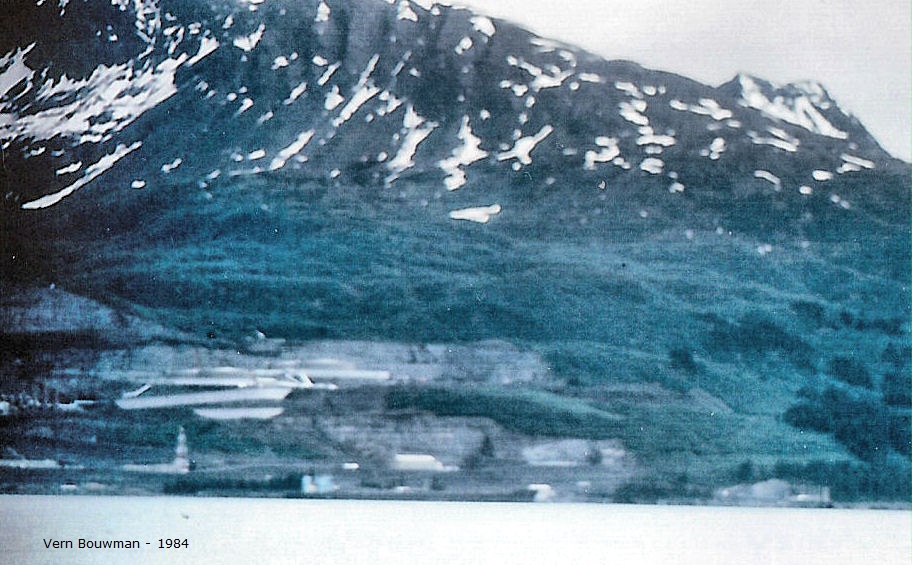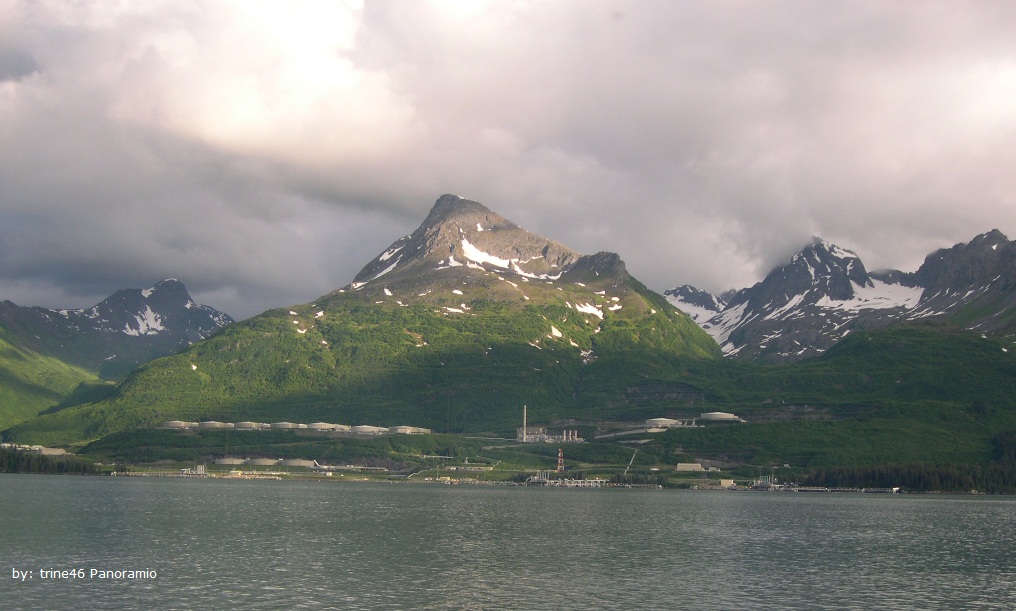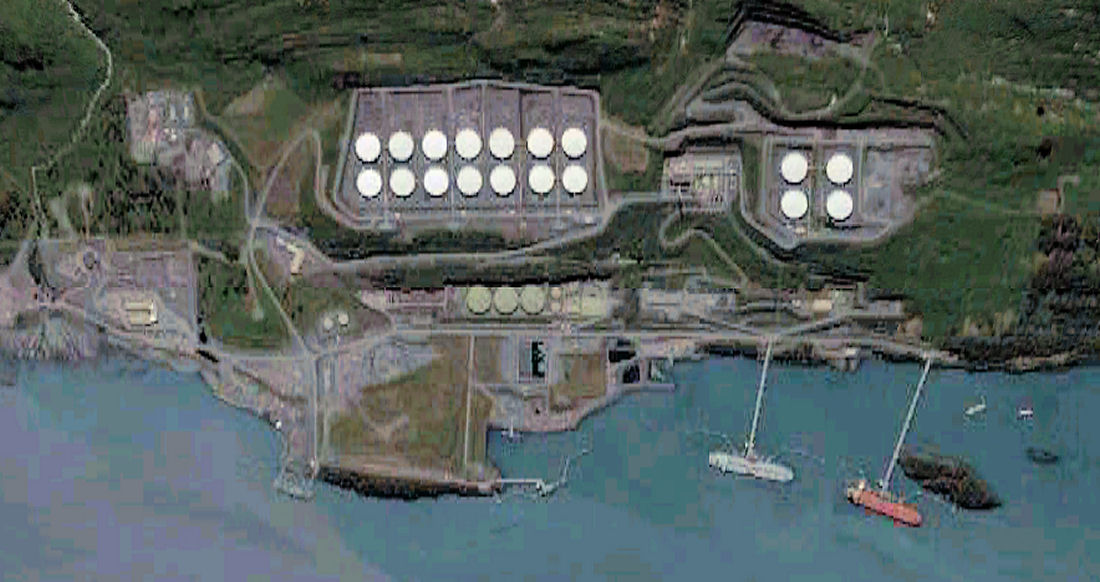| Alyeska Pipeline Terminal SUMMER - 1984 This is as close to the Pipeline terminal Vern and his travailing partner got. |

|
|
Oil from the pipeline is first stored, then loaded aboard tankers at the terminal in Valdez. Located across the bay from Valdez, this 1,000-acre site is built on the northernmost ice-free port in the United States, and offers a deep-water channel with a minimum width at the entrance of about 3,000 feet. There are 18 crude oil storage tanks at the Terminal—4 in the West Tank Farm, and 14 in the East Tank Farm. The tanks are 250 feet in diameter, 62 feet and 3 inches high, and can hold 510,000 barrels each, for a total capacity of 9.18 million barrels. For safety, each tank is surrounded by a concrete dike, which can hold 110% of the oil in the tanks. The nerve center of the 800-mile-long pipeline system is the Operations Control Center at the Valdez Terminal. The controllers at the center can start or stop the entire pipeline, or initiate or terminate functions at any part of the line. Other shore facilities include a vapor recovery system, a ballast water treatment plant, power plant, warehouses, and shop buildings, meters, and meter-proving equipment, water treatment and sewage systems, oil spill contingency equipment, and fire-fighting systems. Tankers arrive almost daily at Valdez to carry crude oil from the pipeline terminal to refineries. Tanker berths at the terminal are numbered 1, 3, 4, and 5 (berth 2 could be built if needed). Berth 1 is a floating berth, and can handle tankers of 16,000 to 12,000 deadweight tons. Berth 3 is fixed, and accommodates tankers up to 250,000 deadweight tons. Berths 4 and 5 are also fixed and can each handle tankers up to 265,000 deadweight tons, or larger. Oil is gravity-fed to the ships through four hydraulically controlled metal arms. Berth 1 can load 80,000 barrels per hour. Berths 3, 4, and 5 can each load up to 110,000 barrels per hour. The berth loading arms are also used to transfer the ship's
ballast water — used to stabilize a ship at sea hen it is not carrying
oil — to the ballast water treatment plant for processing. The water is
treated to remove oil, then discharged 700 feet offshore into Port
Valdez, at depths of 200 feet or more. HISTORY AND FACTS - Valdez This Google Photo is not so pretty
- Look at the oil sheen on the water.
|
|


